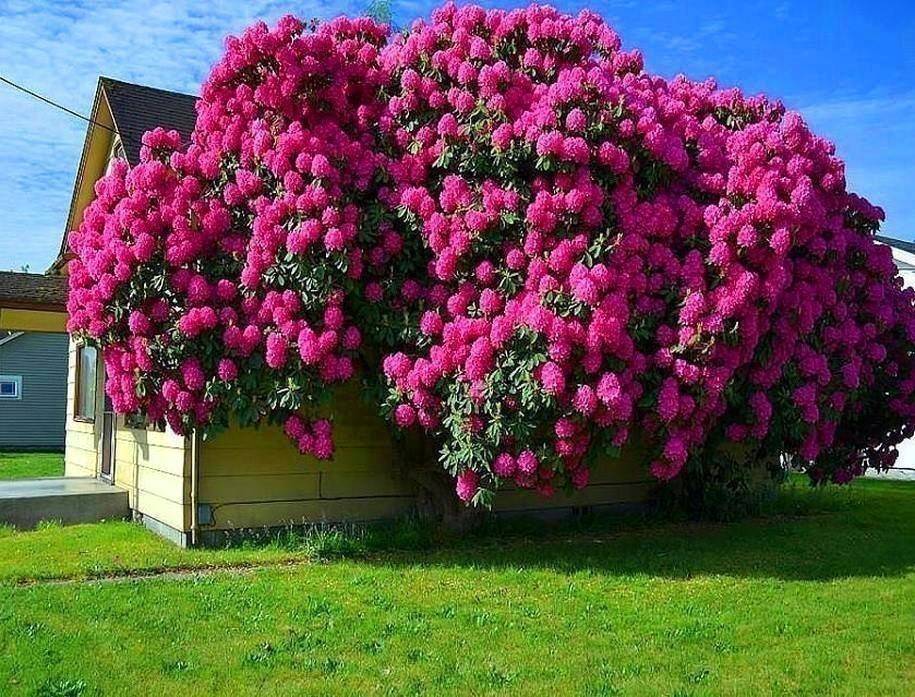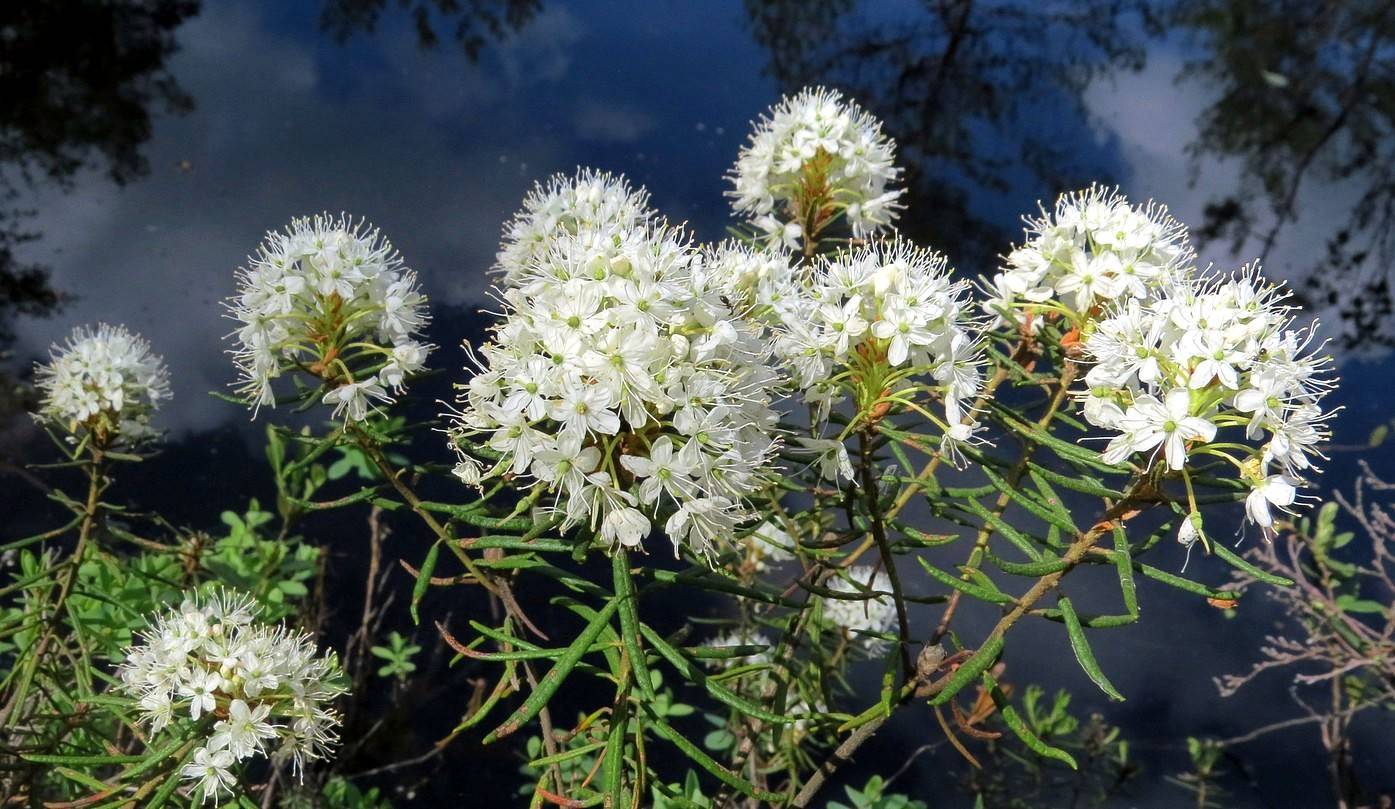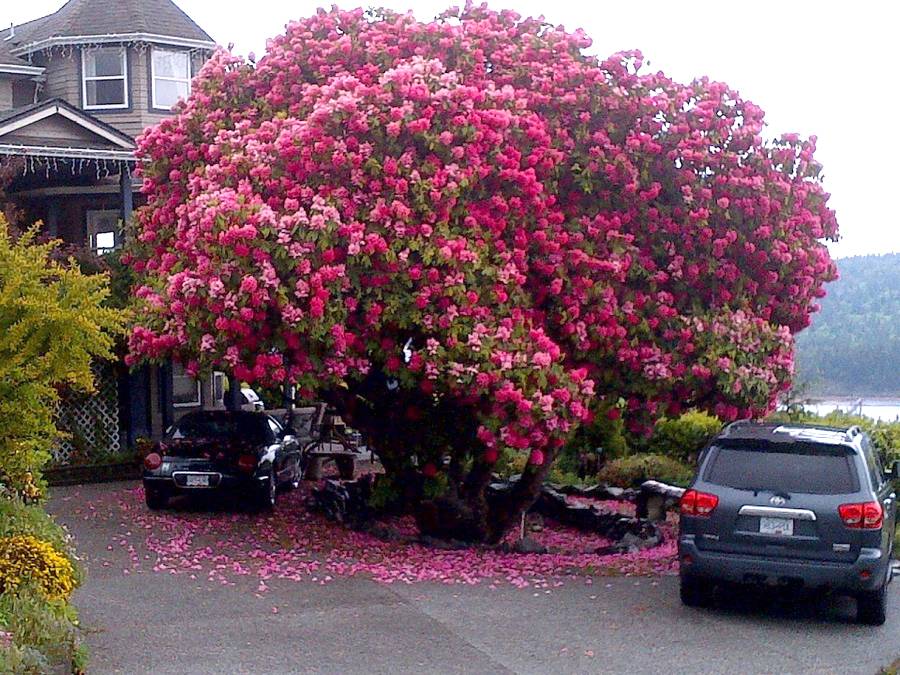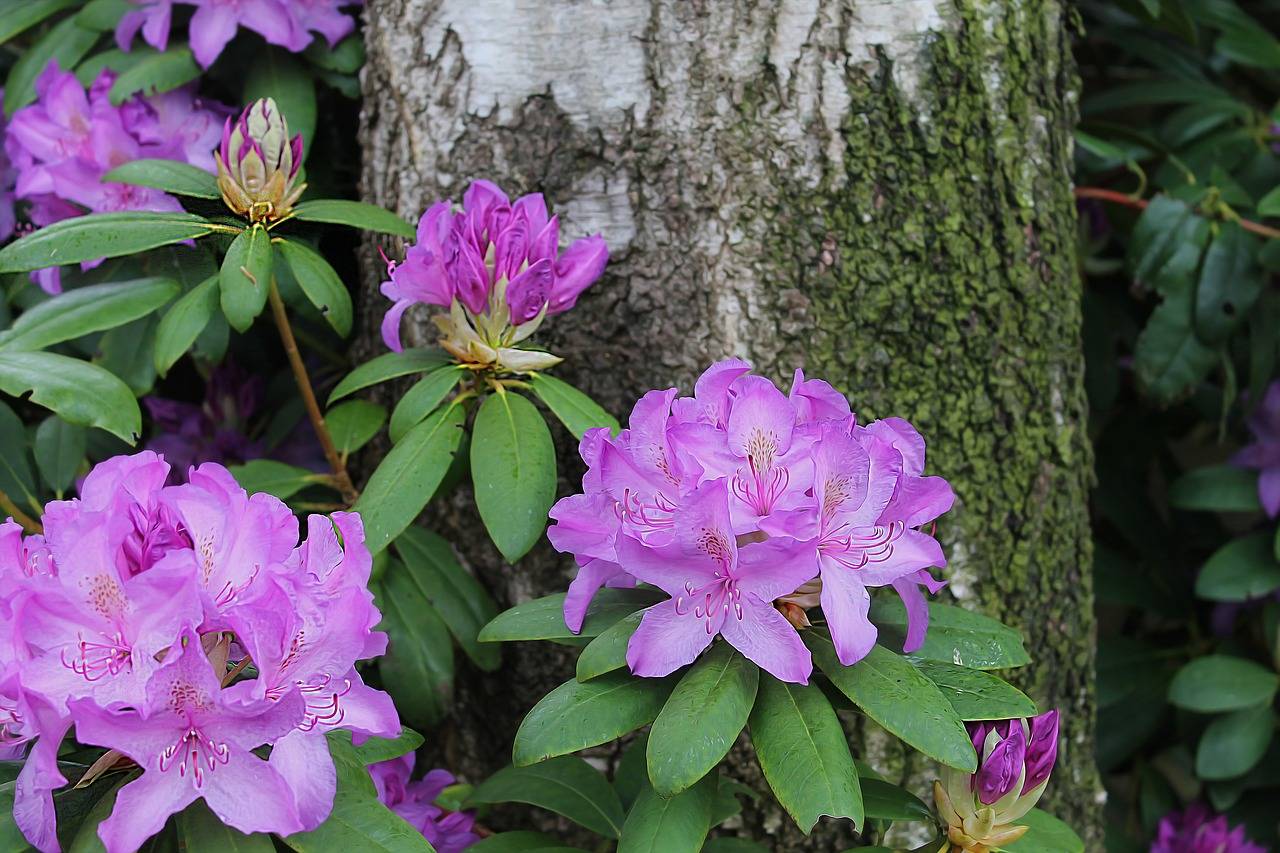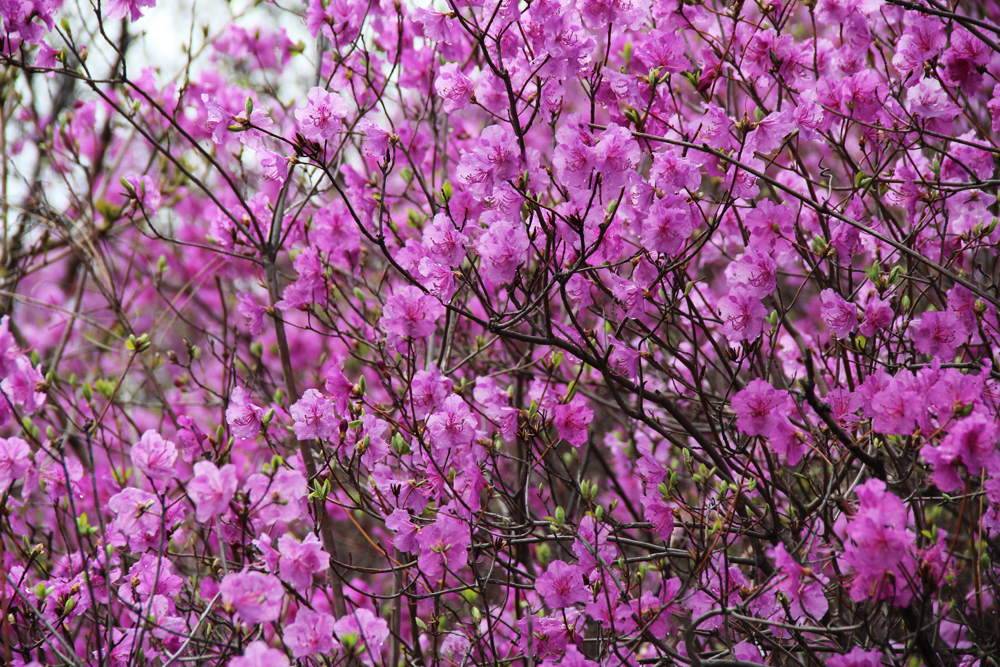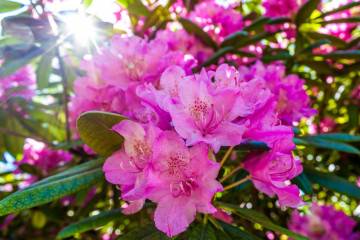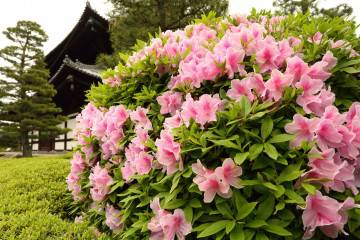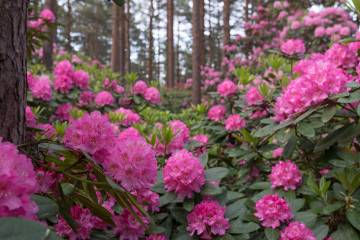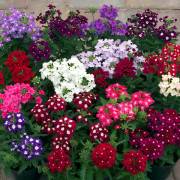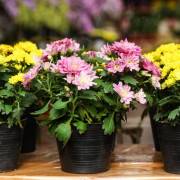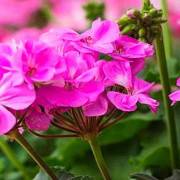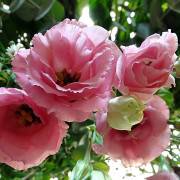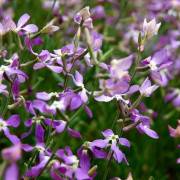Rhododendron: what is it, how many blooms in time
Content:
- History of the garden plant rhododendron
- Where is rhododendron common
- Popular varieties and varieties
- How many rhododendron blooms
- What color are rhododendrons
- Chemical composition
- Decorative use
- Rhododendron in the landscape
- What diseases does rhododendron treat?
- How to grow rhododendron from seeds at home
- Dahurian rhododendron petal juice
When looking at this bush, the association immediately comes with a large rose tree. This is absolutely true, and the word rhododendron is translated from the Greek language. Basically, the name consists of two separate words - "rhodon" meaning "rose" and "dendron" meaning "tree". Rhododendron is a plant that has confidently conquered the hearts of both experienced gardeners and amateur beginners. Luxurious and long enough flowering of a chic bush will not leave anyone indifferent.
History of the garden plant rhododendron
One of the brightest representatives of the Heather family is the Rhododendron, represented by shrubs and trees. If you read the species definition, there are:
- evergreen;
- deciduous;
- semi-deciduous.
Various sources describe a different number of plants in this genus. On average, it brings together from 800 to 1300 plants, including the very popular azaleas in indoor floriculture.
Where is rhododendron common
In nature, it grows mainly in the Northern Hemisphere - the territory of Southern China, the Himalayas, Southeast Asia, North America and Japan. Some representatives are found in the Far East and the Caucasus, and grow in the climatic conditions of Ukraine. They can be located singly, or in whole groups.
Most often they prefer the northern slopes of the mountains, along which they can climb to the alpine belts. The plant needs high humidity and a little shade from other shrubs or trees.
Interestingly, in modern botany, two genera of plants have been combined - ledum and rhododendrons. As a result, the plant that bore the name "Marsh Ledum" was renamed to "rhododendron". So, the Ural wild flowering rhododendron is now a national pride and a symbol of the inhabitants of central Russia.
In central Russia, semi-evergreen and deciduous plant species take root best of all. When grown in the garden, they almost never exceed 1.5–2 m in height, although rhododendrons in nature can be much higher. Crohn's can be:
- elliptical;
- spherical;
- branched.
Popular varieties and varieties
It is recognized that about 40 species of this shrub can grow in Central Russia.
The lush inflorescences of the bushes consist of 20-30 bell-shaped flowers. The inflorescences are at the ends of the branches. Surrounded by dark green glossy leaves, the inflorescences resemble huge bouquets. In the middle lane, they are ranked among the first shrubs to bloom in spring. Consider the types of this popular shrub based on their foliage.
Evergreens are distinguished by the fact that in winter such a rhododendron does not shed its leaves, but simply folds them into a tube, unfolding when a comfortable temperature is set outside.
The most popular evergreen shrubs include the following:
- katevbinsky;
- grandiflorum;
- pontic;
- roseum elegance;
- Alfred.
Semi-evergreen species include:
- Sikhote-Alin;
- ledebour.
The most popular deciduous varieties are rightfully considered:
- daurian;
- yellow;
- Japanese;
- Canadian;
- Kamchatka;
- dense.
All varietal species differ among themselves by the splendor of flowering, a variety of colors and shapes.
How many rhododendron blooms
Gardeners are often interested in the question, how much rhododendron blooms in time. The flowering time of the shrub is primarily influenced by climatic conditions, the growing region, the plant variety and its condition. In most cases, the flowering period starts in April and ends in June.
The flowering period is opened by early flowering shrubs (April, May), then evergreen species pick up the baton and deciduous species end the flowering season.
How much rhododendron blooms also directly depends on a particular variety. In general, flowering lasts 15-20 days, but some shrubs can delight with chic inflorescences from 30 to 45 days. In addition to the variety, the following factors also affect the flowering time:
- brightness and amount of light;
- air temperature;
- saturation of the soil with nutrients.
What color are rhododendrons
Rhododendron is the largest shrub in terms of species diversity. Therefore, you can easily pick up a bush that matches the landscape design in color. For example, if you need a blue, lilac or purple bush - inflorescences of such shades in:
- attractive;
- katevbinsky;
- dense;
- merrin;
- Canadian;
- pontic.
If you prefer red flowers, you should pay attention to the inflorescences:
- Kamchatka;
- blood red;
- albrecht;
- rusty.
Pink inflorescences in:
- Canadian;
- Daursky;
- the largest.
The Japanese variety will delight with salmon and orange flowers.
And here are the yellow flowers:
- marigold;
- yellow;
- golden.
Inflorescences will delight with white and cream flowers in the garden:
- short-term;
- Atlantic;
- sticky;
- adams;
- tree-like;
- Caucasian.
You can always choose a variety that will fit optimally into the overall landscape design of any site.
Chemical composition
It is important to know about rhododendron, that it is a poisonous plant. Dangerous properties are associated with a substance contained in the composition, called andromedotoxin (also called rhodotoxin, acetylandromedol).
This cyclic diterpene is referred to as polyhydroxylated. In terms of the mechanism of action, it is comparable to neurotoxins and is characteristic of almost all Heathers.
The action of this toxic substance is based on the ability to disrupt the functioning of cellular receptors. Initially, the central nervous system is excited, and then comes into a state of depression. This mechanism of action is quite capable of leading to death. This information is not known to everyone, but it excludes all doubts that the rhododendron bush is poisonous or not.
Decorative use
Not a single gardener, having once seen this flowering shrub, will not deny himself the pleasure of planting it on his site. Many believe that it is incomparable with any other decorative flowering. And if many call the queen of the garden a rose, then the rhododendron is deservedly called its king.
What year a young rhododendron blooms after planting is influenced by many circumstances - fertilization, weather conditions, care. A high decorative effect can be obtained from the first year of planting seedlings, acquiring large-sized plants aged 5-8 years with a formed crown and flower buds ready to bloom.
Also, the effect in decorative use largely depends on how exactly the plant is located on the site.
Rhododendron in the landscape
It is considered a versatile ornamental plant. This is especially true of the period when the rhododendron in bloom and bright inflorescences cover the bush from top to bottom.
The plant looks great both in group plantings and as a tapeworm against the background of emerald green grass. It goes well with many types of decorative flowering and decorative deciduous plants.
In landscape design, it is used to create a hedge. Versatile in uniform landings. Often used for landing near artificial ponds or streams.
What diseases does rhododendron treat?
In medicine, a description of the phytoncidal, bacterial, insecticidal properties of this plant has long been compiled. Revealed in it tannins and ascorbic acid. It is obvious that the plant has medicinal properties. The funds containing in its composition are used as:
- antipyretic;
- diaphoretic;
- pain reliever.
Shows good results in the treatment of diseases of the cardiovascular system. It is rich in substances that increase the power of heart contractions and, accordingly, increase blood flow.
With the help of this plant, they eliminate problems with:
- rheumatism;
- chronic colitis;
- vegetative neuroses;
- epilepsy;
- erosion of the uterus;
- colds.
In folk medicine, infused leaves of the plant are mainly used.
How to grow rhododendron from seeds at home
Seed propagation is the main one for this shrub. Plant cuttings have a weaker root system, and there is no bulbous bush at all. Sowing is done in January. Rhododendron seeds are small, they are sown on the surface of the soil prepared in advance. In order for them to germinate, the following rules must be observed:
- temperature regime - +25 ° С;
- mandatory backlighting;
- spraying with a spray bottle - daily;
- airing.
Fortified seedlings of rhododendron bushes are planted either in a greenhouse or in open ground, depending on weather conditions. The theory of how to grow rhododendron from the smallest seeds is simple, the main thing is to strictly follow all the recommendations.
Dahurian rhododendron petal juice
Scientists have found the following nutrients in the petals of the plant:
- fructose;
- phytoncides;
- resins;
- essential oils;
- vitamins A, C, E.
It is not surprising that the juice from this amazing plant, which is also called rosemary rosemary, is used in medicine. In combination with fresh cream, the juice obtained from the petals treats:
- ulcers of the stomach and duodenum;
- thrombophlebitis;
- wound surfaces.
Having learned what a rhododendron is and having familiarized yourself with all the conditions for growing and caring for a plant, you can decide whether to plant it on your site.
